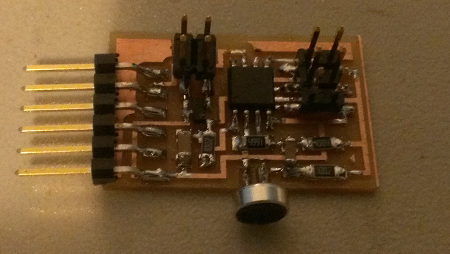Sensing the Physical World
While we've had a chance to design, produce, and program electronic circuits, our circuits thus far have largely been confined to the virtual world. This week, we focused on creating devices that can sense and measure the real world.
I was hoping to be able to create something that takes those inputs and uses them in an interesting way (a little robot that moves when it senses light, for instance), but wasn't quite able to figure out the coding. Nevertheless, I built all the "Hello World" boards, used the example code, and played around with them. I also tried to examine (1) The ATtiny45 pins and their inputs/outputs, (2) The circuit components and how they interact, and (3) the C code itself.
Going forward, it should be fun to use these sensors to embed the objects we make with a little more intelligence.
Here are the input devices I built (loaded with the exampe C code written by Prof. Gershenfeld), and their visulization outputs from the Python scripts:
Hello Button
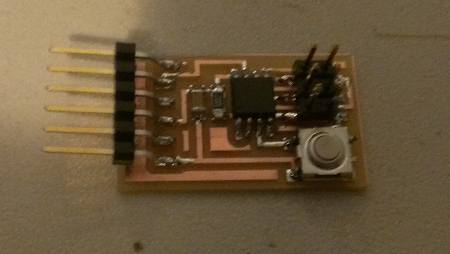
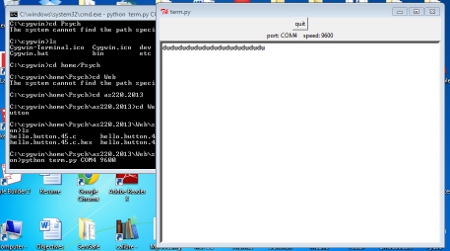
Hello Light
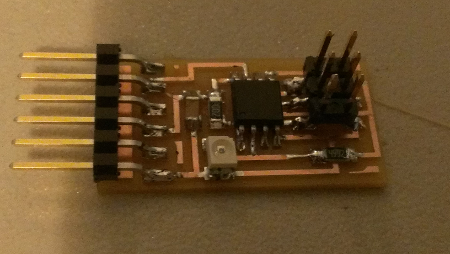
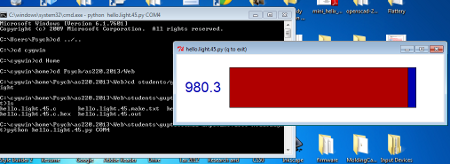
Hello Reflect
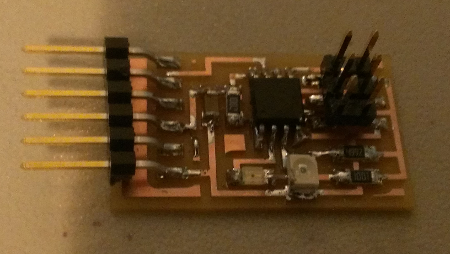
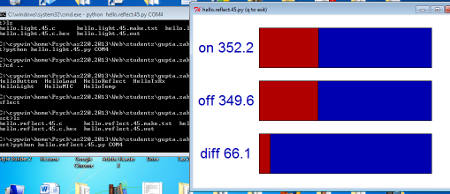
Hello Temp
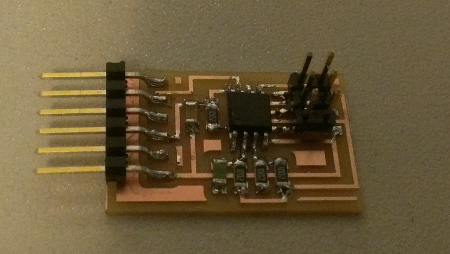
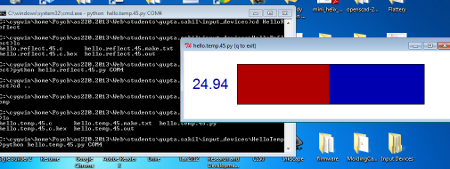
Hello Load
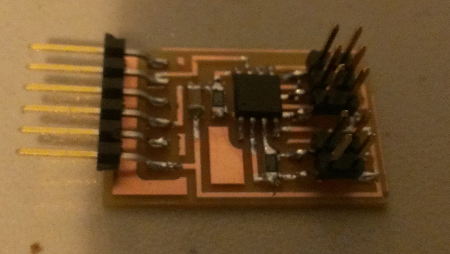
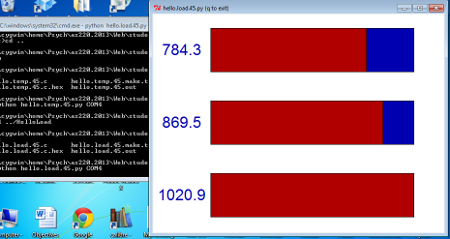
Hello Transmit-Receive
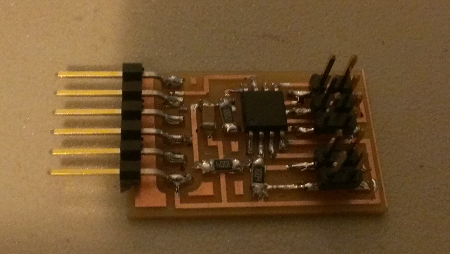
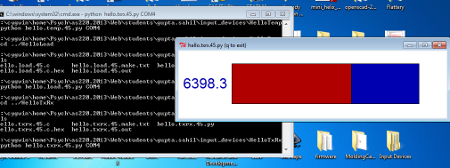
Hello Mic
